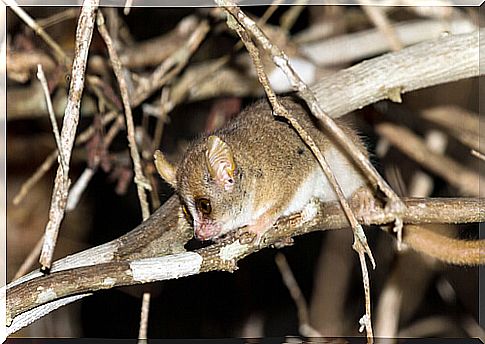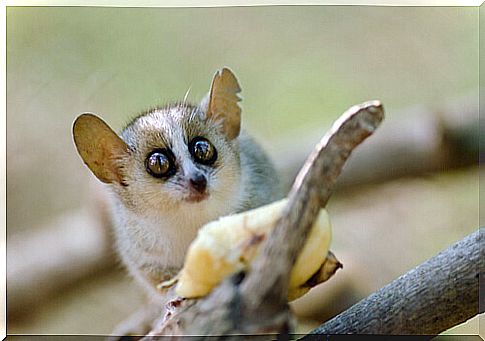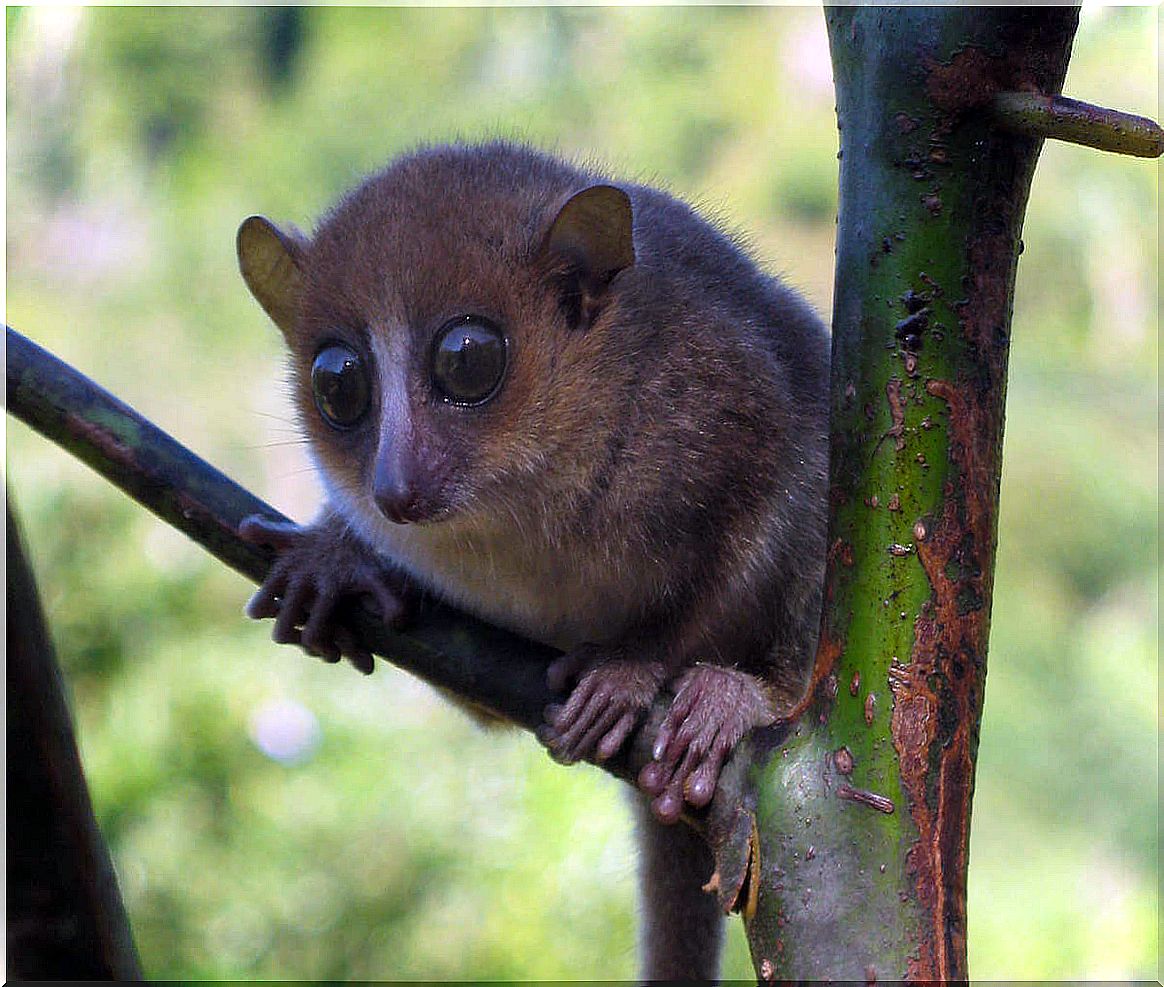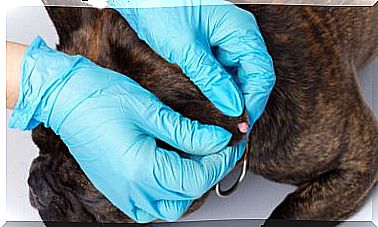The Microcebus: The Smallest Lemur In The World

On the island of Madagascar we can find one of the most diverse fauna in the world. Among them, we discover a most curious species: the microcebus, a genus of lemurs that are among the smallest primates.
The microcebus: general characteristics
The first specimens of mouse lemur were discovered at the beginning of the 20th century, and only two species were described. Over the years, this list of species has grown to a total of 24 described species, three of them recently discovered. Differentiating some species from each other can be really complicated, and it is only achieved by resorting to genetic sequencing methods.
They share all the morphological characteristics common to all lemurs, and to primates, such as the presence of nails and the opposable thumb on their five-fingered hands. However, its most prominent feature is its small size. If we measure their size from the head to the end of the tail, we will see that they do not exceed 27 centimeters in length.
Another characteristic common to all mouse lemurs is their quadruped movement, as well as their predominance of living in the treetops and branches. They inhabit all forested regions of Madagascar and its vicinity. Its diet is omnivorous, and can include anything from fruit to small arthropods. They are all nocturnal animals, and their large eyes are adapted for it.
Berthe’s mouse lemur
This animal holds the title of smallest primate in the world. This species of microcebus ( Microcebus berthae ) has a total size – not including the tail – of between 9 and 10 centimeters, and they do not usually exceed 30 grams in weight.

These tiny animals have a dense and short coat that is yellowish on top, and somewhat lighter on the bottom. This fur helps them to go unnoticed when a predator is lurking, as they are easy prey for snakes, owls and mongooses.
Unfortunately, this species of microcebus is in serious danger. The International Union for Conservation of Nature has included it in the list of the 25 most endangered primates in the world. The loss and fragmentation of their habitat are behind their progressive disappearance.
Arnhold’s mouse lemur
It is one of the most recently discovered species of microcebus. Arnhold’s mouse lemur ( Microcebus arnholdi ) was officially described in 2008.

We are facing a ‘bigger’ lemur than the previous specimen, since its weight is around 50 grams. Its coat is also different, with brown and gray tones in the dorsal area; its tail is about 13 centimeters. They inhabit some cloud forest regions of the Amber Mountain National Park, in northern Madagascar.
Gerp’s mouse lemur, another ‘recent’ microcebus
In 2012 a group of French and Malagasy researchers announced the discovery of a new species of microcebus. It was Gerp’s mouse lemur ( Microcebus gerpi ), a species with a very restricted habitat that is currently under threat.

This specimen is relatively large if we compare it with the previous ones, as it can weigh close to 65 grams. It belongs to the group of species of microcebus of more than 50 grams.
They have a long tail, covered with dense brown fur. Its body is dominated by a dark brown dorsal coat and a paler ventral one ; at the top they have a wide red stripe. Its habitat is limited only to a low-lying forest east of Madagascar.
Being a relatively new species, there is not much more data in terms of behavior, reproduction and ecology.








